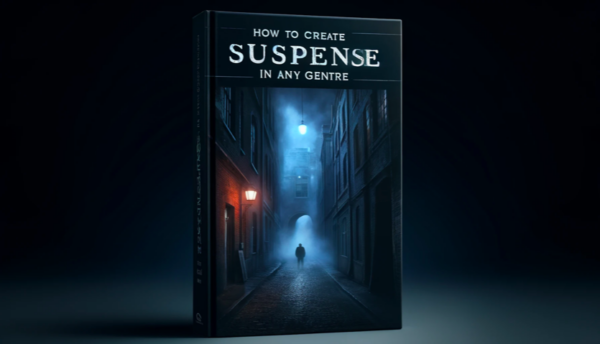Writing from various viewpoints is a narrative technique where a story unfolds through the eyes of two or more characters, each offering a unique viewpoint. But what is multiple perspectives in storytelling, and why are multiple perspectives important? This approach enriches narratives by allowing readers to see events from diverse angles, deepening their emotional connection to the story. Examples can be found in literature where different characters interpret the same events uniquely, adding layers of complexity. By using this technique, authors create a multidimensional experience that enhances empathy, builds intrigue, and keeps readers engaged.
What Are Multiple Perspectives in Writing?
What are multiple perspectives in writing? In storytelling, this refers to a narrative technique where the story is presented through the viewpoints of several characters rather than a single character’s outlook. This method encompasses varying perceptions, multiple viewpoints, and experiences, showcasing the diversity of reactions and interactions within a narrative. It differs from a singular perspective by providing a more rounded and nuanced portrayal of events, enabling a deeper exploration of the story’s environment and dynamics.
One of the key terms associated with multiple perspectives is “point of view” (POV), which is the lens through which the story is experienced. POV can be categorized primarily into first person, second person, and third person, with each offering different levels of intimacy and scope. First-person POV immerses the reader in the personal experiences and internal monologue of the POV character, creating a direct connection. Third person, however, can range from a close follow of one character to an omniscient overview of many, providing a broader understanding of the narrative world.
“Character’s perspective” refers to how individual characters perceive and react to the events of the story based on their personal backgrounds, biases, and emotional states. This influences their narrative voice and how they interpret interactions and incidents, which can vary dramatically from one character to another.
“Multiple POV” involves the use of several different points of view within a single narrative. This technique allows the author to weave a richer tapestry of the story by showing how different characters interpret the same events in divergent ways. It offers a multi-faceted view of the storyline, enhancing the complexity and depth of the narrative. This approach can reveal contradictions and confirmations between characters’ understandings, adding layers of tension and enrichment to the reader’s experience.
Understanding these concepts is crucial for writers looking to effectively employ different perspectives in their work, providing a more vibrant and engaging reading experience.
The Basics of Writing Multiple Characters
In multiple-perspective storytelling, the strategic use of the main character and secondary characters is crucial to effectively weave a comprehensive and engaging narrative. Main characters often drive the central plot forward; their decisions and development are pivotal to the story’s progression and resolution. Secondary characters, while not always central to the plot’s progression, enrich the story by providing alternative viewpoints and supporting the main characters’ arcs. These characters can also introduce subplots, offer insights into the primary narrative, and facilitate the development of the main characters by acting as foils or allies.
When writing dialogue from multiple perspectives, it is essential to develop distinct voices for each character to maintain clarity and avoid confusing the reader. Here are some techniques to achieve this:
1. Unique Backgrounds and Worldviews: Each character should have a well-defined backstory that shapes their worldview, responses, and interactions. Differences in age, education, socio-economic status, and personal experiences can naturally create diverse narrative voices.
2. Consistent Character Voice: Maintaining a consistent voice for each character across their appearances in the narrative helps readers quickly recognize and differentiate between different perspectives throughout. This voice should reflect their personality traits and backgrounds—whether it’s the vocabulary they use, the rhythm of their speech, or the subjects they frequently think about or discuss.
3. Character-Specific Descriptions and Reactions: When characters observe or react to events, filter their descriptions through their unique perspectives. What one character notices or focuses on can be very different from another, depending on their priorities and emotional states. For instance, a character who is a painter might notice and describe colors and details in a scene more vividly than a character who is more focused on the interpersonal dynamics at play.
4. Internal Monologue: Giving characters internal monologues is a powerful tool for distinguishing voices. These inner thoughts can reveal personal motivations, fears, and desires that are not apparent to other characters or even the reader if not directly disclosed by a secondary character. It also helps in deepening the reader’s connection to the characters, making their actions and reactions more understandable.
5. Dialogue: Each character should have a distinct way of speaking that reflects their personality and background. This includes their choice of words, sentence structure, and even their speech patterns, like a tendency to be more direct or more circumspect.
6. Cultural and Social Idiosyncrasies: Incorporating specific cultural, regional, or social nuances in how characters express themselves can further enhance the distinction between voices. Whether it’s a regional accent, specific slang, or a formal way of speaking, these elements can significantly differentiate two characters both in dialogue and thought.
By carefully crafting each character’s distinctive voice and perspective, writers can create a vivid and textured narrative that engages readers and conveys the complexities of the story through multiple lenses. This not only prevents confusion but also enriches the reading experience by offering a multifaceted look at the narrative world.
Techniques for Managing Different Points of View
Writing a narrative from different points of view (POV) allows readers to experience the story through multiple lenses, adding depth and complexity to the narrative. However, managing these shifts effectively is crucial to maintaining clarity and enhancing the reader’s experience. Here are several methods and tips for handling POV shifts skillfully:
1. Using Chapter Breaks and Section Dividers
One of the most straightforward and effective ways to switch between different points of view is by using chapter breaks or section dividers. This clear physical separation helps signal to the reader that a change in perspective is occurring. Each new chapter or section can begin with the name or a unique identifier of the POV character, immediately orienting the reader to whose perspective they are now following. This method is particularly effective in novels where the story is equally split among several main characters.
2. Perspective Shifts Within Chapters
For a more fluid narrative, writers can shift perspectives within a single chapter. To do this effectively without confusing the reader, it’s essential to clearly demarcate when the shift happens. This can be done through a line break or a distinct typographical symbol. Additionally, the first few sentences following the shift should firmly establish the new POV character by mentioning their name or a distinctive aspect of their viewpoint.
3. Consistent and Distinct Character Voices
Maintaining a distinct voice for each character is vital when switching points of view. Each character should have a unique way of thinking and speaking and writing style that reflects their background, personality, and current situation. Writers can achieve this by varying syntax, diction, and rhythm in each character’s sections. For example, a young, energetic character might use shorter, choppier sentences, while a more reflective, older character might employ a more complex, nuanced syntax.
4. Handling Internal Thoughts
Internal thoughts are a powerful tool for deepening character development and maintaining distinct voices. When writing internal monologues, keep the character’s personality and experiences in mind. What they think about an event and how they process their feelings should be unique to them and consistent with their previous behavior and dialogue. These thoughts can also be a great way to provide exposition and reveal secrets that are not apparent in dialogue.
5. Signposting
To help guide readers through multiple perspectives, especially in complex narratives with frequent shifts, signposting is invaluable. This involves embedding subtle cues in the narrative that remind the reader of who is speaking. For example, specific references to past personal events, particular concerns, or even recurring metaphors can all tie a section clearly to a character.
6. Varied Narrative Techniques
Different characters might not only see the world differently but also tell their own story very differently. Employing varied narrative techniques can enhance this. For instance, one character’s POV might be presented in a first-person narrative, offering intimate insight into their thoughts and feelings, while another’s could be shown in a third-person limited, providing a broader view of their actions and interactions.
7. Emotional and Psychological Depth
Each character’s narrative should offer not just a different perspective but also a different emotional depth. This can be achieved by letting the characters not only report events but also react emotionally and intellectually in ways that reflect their challenges and growth.
Effectively managing multiple points of view not only enriches the narrative but also draws readers deeper into the world of the story, providing a multi-dimensional experience that can lead to a more engaging and memorable read.
Handling Scenes from Multiple Angles
Writing the same scene from different characters’ perspectives is a nuanced technique that can significantly enhance reader engagement and deepen character development. This approach allows the writer to revisit key events in the story through the eyes of multiple characters, providing a layered and multifaceted view of the narrative.
Impact on Reader Engagement
When a scene is depicted from various angles, it inherently multiplies the reader’s interest and investment. Each retelling can reveal new information, alternate emotional reactions, or hidden motivations that were not apparent from the initial viewpoint. This not only keeps the readers on their toes, curious about what each new perspective might unveil, but also builds a more immersive and dynamic story environment. The readers become active participants, piecing together the fuller picture from the patchwork of perspectives, which can make the narrative more engaging and compelling.
Enhancing Character Development
This technique also serves as a powerful tool for character development. By showcasing how different characters perceive and react to the same events, the author can highlight the distinct personalities, biases, and vulnerabilities of each character. For instance, a scene involving a heated argument might be interpreted vastly differently by each participant: one might feel justified, another misunderstood, and a third might observe unnoticed subtleties. Such differences in perception can illustrate the complexities of interpersonal relationships and character traits, providing depth and realism to the characters.
Furthermore, revisiting scenes can emphasize critical moments of character growth or change. Seeing how different characters evolve or regress in response to the same event can offer insights into their resilience, adaptability, and moral compasses. This not only enriches the characters’ arcs but also aligns closely with how real people are shaped by their experiences, resonating authentically with readers.
In conclusion, writing scenes from multiple perspectives not only makes the story more engaging by adding layers of complexity and intrigue but also enriches character portrayal, making them more robust and relatable. This approach allows readers to experience the narrative through a kaleidoscope of emotional and psychological colors, enhancing both the impact and the depth of the story.
The Role of Narrative Voice and Tense
Choosing between first-person and third-person omniscient narrative voices significantly impacts how mixed perspectives are handled in storytelling. Additionally, the decision to use past or present tense plays a crucial role in maintaining narrative consistency and shaping the reader’s experience.
First Person vs. Third Person Omniscient
First Person: Writing in the first person allows readers to deeply connect with the narrator’s personal thoughts, feelings, and immediate reactions. Each character’s perspective is given a distinct and intimate voice, making their segment of the story feel personal and urgent. However, the limitation is that the narrative is confined to what the character knows, sees, and experiences, which can restrict the story’s scope and leave other characters’ motivations and thoughts opaque.
Third-Person Omniscient: This perspective offers a god-like overview of the entire narrative landscape, providing insights into the thoughts, feelings, and hidden motives of all characters simultaneously. It facilitates a broader understanding of the entire story, and can seamlessly incorporate perspectives without switching the narrative voice. However, it can sometimes distance the reader from the characters, as the intimate connection fostered by first-person narration is less pronounced.
Past Tense vs. Present Tense
Past Tense: The most commonly used tense in storytelling, past tense, allows for a reflective and sometimes nostalgic tone. It suggests that the story has already happened, which can give the narrative a sense of completeness and reliability. It’s particularly effective in maintaining consistency across multiple narrators’ perspectives, as the narrator has a complete overview of events and outcomes, allowing for foreshadowing and reflection.
Present Tense: Present tense brings immediacy and urgency to the narrative, making the reader feel as though they are experiencing events alongside the characters. This can be highly engaging, especially in action-packed or emotionally charged scenes. However, when dealing with perspectives, present tense can be challenging as it requires careful handling to keep the narrative flow smooth and coherent without confusing the reader.
Each combination of narrative voice and tense offers unique advantages and challenges. First-person can make alternate perspectives more personal and immersive, while third person omniscient can provide a more cohesive and all-encompassing view of the narrative world. Similarly, past tense might offer a more orderly and reflective narrative, whereas present tense can heighten the emotional and experiential impact of the story. The choice depends largely on the story’s nature and the effect the writer wishes to achieve.
Practical Examples from Literature
One of the most celebrated examples of multiple-perspective writing is found in George R.R. Martin’s “A Song of Ice and Fire” series. Martin masterfully employs a wide array of perspectives to create a sprawling, intricate narrative that captures the complex politics and personal dynamics of the fictional continents of Westeros and Essos.
Each chapter in the series is dedicated to a different character’s point of view, which allows the reader to understand the motivations, fears, and ambitions of a diverse cast. This technique enriches the narrative by offering insights into the story from various social, cultural, and personal angles. For instance, the reader gets an intimate look at the political strategies of leaders like Daenerys Targaryen and Tyrion Lannister, while also experiencing the more grounded impacts of these strategies on characters like Jon Snow and Arya Stark.
Martin’s use of multiple points of view also increases the suspense and complexity of the narrative, as readers are often privy to information that other characters are not. This creates dramatic irony and builds tension, as readers anticipate the intersections of the characters’ paths and the explosive outcomes of their actions. By leveraging different perspectives, Martin not only crafts a richly layered world but also keeps readers engaged through varied and compelling character-driven storytelling.
Common Pitfalls and How to Avoid Them
Writing from multiple perspectives offers a richness to storytelling but also presents specific challenges that can confuse readers if not managed carefully. One of the most common pitfalls is “head hopping,” where the narrative jumps between different characters’ thoughts too abruptly, making it difficult for readers to follow the story or connect deeply with any single character.
Avoiding Head Hopping
Head-hopping occurs when an author switches from one character’s internal perspective to another character’s head all within the same scene without clear demarcation. This can disorient readers and break the flow of the narrative. To avoid this:
Use clear section breaks or chapters when changing the point of view. This physical separation helps readers reset their expectations and prepares them for a new perspective.
Maintain voice consistency for each character. Ensure that each POV shift re-establishes the character’s unique voice early on in the segment. This helps reinforce whose perspective is being portrayed.
Strategies for Clarity and Engagement
1. Establish Distinct Voices: Give each character a distinct way of speaking and thinking that reflects their background, experiences, and personality. This differentiation helps readers easily identify the current POV.
2. Limit POV Characters: While it can be tempting to write multiple points from many characters’ perspectives, limiting the number of POV characters helps keep the story focused and the narrative more cohesive.
3. POV Labels: At the start of each new POV section, especially in scenes with potential for confusion, label the POV character’s name. This immediate clarification assists readers in orienting themselves quickly.
4. Consistent Perspective Shifts: Establish a pattern for how and when perspective shifts occur—whether cyclically by chapter, or at pivotal moments in the story. This predictability aids readers in navigating through different viewpoints without losing track of the storyline.
5. Recap and Reflect: When returning to a character’s POV after a lengthy absence, briefly recap their last known situation through their thoughts or dialogue. This refresher aids continuity and re-engages the reader with the character’s personal storyline.
By carefully managing how multiple perspectives work and are handled, writers can enhance the depth and breadth of their narratives without sacrificing clarity and reader engagement. Properly executed, these perspectives can transform a simple story into an expansive, immersive experience.
Final Thoughts: Mastering Multiple Perspectives in Writing
Writing with this technique adds depth, complexity, and realism to a story, allowing readers to engage with different viewpoints and uncover hidden layers of meaning. Whether using first-person multiple POVs, third-person limited, or omniscient narration, the key is to keep perspectives distinct and transitions clear.
By mastering these techniques and avoiding common pitfalls like head-hopping, writers can craft rich, immersive narratives that resonate deeply with readers. Whether you’re working on a novel, short story, or screenplay, embracing multiple perspectives will help you create a more compelling, multi-dimensional storytelling experience.
Your Publishing Journey Awaits – Start NowFAQs – Multiple Perspectives Importance and Techniques
Q1: What does the term multiple perspectives refer to?
This term in storytelling refers to a narrative approach where events are presented through the viewpoints of different characters rather than a single narrator. This technique enhances the complexity and depth of a story by showcasing diverse interpretations, experiences, and biases. It allows readers to gain a broader understanding of the plot, themes, and character dynamics, often revealing contradictions, misunderstandings, or hidden truths that a singular perspective might miss.
Q2: What are the different methods of perspective?
There are several methods to manage differing outlooks effectively:
- First-Person Multiple POV: Different characters narrate in first-person, giving a deeply personal and subjective view of events.
- Third-Person Limited Multiple POV: The story switches between characters’ thoughts and experiences while staying within a limited third-person framework.
- Third-Person Omniscient POV: A narrator has full knowledge of all characters and events, offering a broader, more objective perspective.
- Epistolary Format: Using letters, journal entries, or other documents to reveal different characters’ viewpoints.
- Unreliable Narrator Approach: Different characters may give conflicting accounts of the same event, forcing the reader to determine the truth.
Each method serves different storytelling needs, from deep character immersion to broad, intricate world-building.
Q3: Why is it good to have multiple perspectives in a story?
Writing in this way can enhance storytelling by:
- Increasing reader engagement – Different viewpoints create intrigue and allow readers to piece together the bigger picture.
- Adding complexity and realism – Characters with unique voices and motivations make the narrative feel more authentic.
- Enhancing character development – Readers see characters through multiple lenses, revealing how they perceive themselves versus how others see them.
- Creating suspense and dramatic irony – One character may know something another doesn’t, keeping the reader hooked.
When done well, multiple perspectives transform a simple story into a layered, immersive experience.
Q4: How do you consider perspectives when writing?
To write effectively using multiple perspectives, consider:
- Character Distinctions: Ensure each POV character has a unique voice, worldview, and way of expressing themselves.
- POV Transitions: Use chapter breaks, section dividers, or clear signposting to help readers navigate perspective shifts.
- Consistent Narrative Style: Maintain the same tense (past or present) and narrative structure across perspectives for cohesion.
- Information Control: Decide what each character knows versus what the audience knows to build suspense or deepen engagement.
A well-executed multi-perspective approach keeps readers oriented while enriching the storytelling experience.
Q5: What is an example of a multiple perspective approach in literature?
A great example is George R.R. Martin’s A Song of Ice and Fire series. Each chapter is written from a different character’s viewpoint, allowing readers to understand events from varying political, emotional, and strategic perspectives. This technique creates deep world-building, character complexity, and suspense as readers see how different individuals interpret the same events differently.
Other notable examples:
- Gone Girl by Gillian Flynn – Uses two alternating first-person narrators with conflicting accounts of events.
- The Night Circus by Erin Morgenstern – Utilizes multiple views to gradually unravel the story’s mysteries.
These books showcase how multiple viewpoints enhance storytelling depth, reader investment, and narrative intrigue.
Q6: How do you avoid confusion when writing different perspectives?
To keep readers engaged without confusion, follow these best practices:
- Clear POV shifts: Use chapter titles, section breaks, or distinct markers when switching perspectives.
- Unique character voices: Ensure characters have distinct speech patterns, internal thoughts, and worldviews.
- Consistent structure: Stick to a recognizable pattern for POV shifts (e.g., alternating chapters).
- Limit the number of POV characters: Too many perspectives can overwhelm readers—focus on a manageable set.
- Recap when necessary: If a character hasn’t appeared for a while, briefly remind readers of their last known situation.
A well-organized approach prevents reader disorientation while making the story engaging and immersive.
Q7: What are common pitfalls when writing in multiple perspectives, and how do you avoid them?
Some common mistakes when writing from multiple positions include:
- Head-Hopping: Abruptly switching perspectives within the same scene without clear transitions. Solution: Use section or chapter breaks when changing POVs.
- Indistinct Character Voices: Characters sounding too similar can confuse readers. Solution: Develop unique dialogue patterns, thoughts, and narrative styles for each character.
- Overcomplicating the Narrative: Too many POV characters can dilute the impact of the story. Solution: Focus on a select few whose perspectives add real value.
- Repetitive Storytelling: Retelling the same scene from multiple characters without new insights. Solution: Ensure each retelling adds fresh perspective, emotions, or hidden details.
Avoiding these pitfalls keeps the narrative clear, engaging, and purposeful.
Q8: What does it mean to see diverse perspectives in a story?
Seeing different perspectives means experiencing the same events through the eyes of different characters. This technique allows readers to understand how personal biases, emotional states, and background experiences shape each character’s interpretation.
For example, in a murder mystery, the detective, the suspect, and a witness may all recall the same night differently—one focusing on the facts, another hiding secrets, and the third noticing overlooked details. This adds depth, complexity, and dramatic tension to the story, making it more immersive and thought-provoking.







